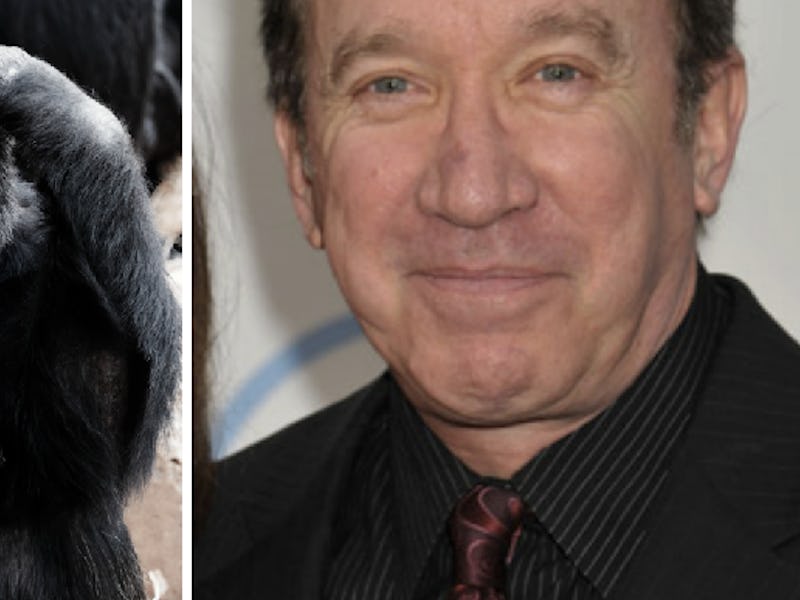On Tuesday evening at 10:10 p.m. Pacific, comedian and former “tool man” Tim Allen sent an existential thought into the vast ether of the internet. “If we evolved from apes,” he wrote, “why are there still apes.”
We don’t know the context in which Allen tweeted about the mystery of human evolution. Maybe he was contemplating his own existence in the “City of Angels” while “looking for answers to life’s big questions,” which he lists as his preferred activity in his Twitter profile. Maybe he is just joking; Allen also describes himself as “wisecracking.”
Yet, on www.timallen.com he lists “science & technology,” as well as “quantum physics,” as interests, so perhaps Allen posed his ape question as a man of letters. The decisiveness of concluding his tweet with a period rather than a question mark, however, shows one thing: This guy doesn’t know shit about evolution.
It is a common misconception that humans evolved from apes. Instead, humans and modern apes, like bonobos and chimpanzees, share a common ancestor. That’s why we are closely related to modern apes and share 98.8 percent of our DNA with these fellow primates. Humans, chimpanzees, and bonobos are actually more closely related to each other than each of these animals is related to gorillas and other primates.
Scientists believe that humans and chimps gradually evolved from a single ancestor species that existed between 6 or 7 million years ago. This species diverged into two lineages: One that evolved to gorillas and chimps, and another that evolved into early humans known as hominids.
After early humans diverged from the shared ancestor, there were dozens of different hominid species — some that died off, and others that became direct ancestors to us Homo sapiens. Scientists still have not discovered what our shared ancestor to modern apes was, which is commonly referred to as the “missing link,” although a skull finding announced last week suggests we may be able to fill in the blanks soon. The fossil, approximately 13 million years old, belongs to a species of an ancient ape called Nyanzapithecus alesi which scientists say is the “most complete fossil ape cranium.”
To sum it up: It’s incorrect to view human evolution as a linear progression that began with apes and eventually morphed into humans. That’s why scientists hate the “march of progress” cartoon so much — the image of a monkey turning into a man is immensely misleading about the complicated, branched evolutionary history that makes up our past.
